#most local galleries take themselves too seriously i want outsider art
Explore tagged Tumblr posts
Text
We need more community art galleries made for everyone and by everyone I mean if my neighbor draws a shitty pikachu on a piece of printer paper and sends it in I want to see it go up on the wall
976 notes
·
View notes
Text
What To Read This Fall
As I embark on this, my seventeenth year of writing weekly on matters close to my heart (and, I hope, also to yours), I’d like to talk about three books I’ve read over the holiday season that affected me in different ways.
The first is David Baddiel’s Jews Don’t Count, a remarkable volume published earlier this year by TLS Books in London. The author, whose name was unknown to me before reading the book, is apparently a well-known British comedian. (He was actually born in Troy, New York, in 1964, but has basically lived his entire life in the U.K.) But this book is not at all funny. Just the opposite, actually: it is 123 pages of very angry prose directed at a world that simply refuses to take anti-Semitism seriously as a form of pernicious racism. Mostly, his fire is aimed at progressives and liberals. But although there is more than enough ammunition left over for him also to take aim at right-of-center groups and conservatives, he’s particularly enraged at people on the left for whom the slightly hint of racism or bigotry is intolerable, yet who seem more than able to tolerate even overtly-stated, ham-fisted anti-Semitic remarks without reacting even slightly negatively, let alone with real revulsion or even feigned outrage.

Even though the book itself is really just an extended (a very extended) essay on the topic, the author has more than enough ammunition at the ready to buttress his point. Over and over he cites instances of public figures, including A-list celebrities, making overt or allusive anti-Semitic comments without facing any sort of public censure, let alone being “cancelled” in the way people who make openly disparaging remarks about other minority groups become personae non gratae overnight and are, at least in some cases, never heard from again. Some of the people he quotes will be familiar to American readers, but others will not be. Nonetheless, his analysis of the reason the comments those personalities are cited as having made are more than tolerated by the liberal public—for the most part because speaking negatively about Jewish people, Jewishness, or Judaism is somehow legitimized with reference to some specific ethnos-wide character trait that people can legitimately use as a rational basis for hate—will be familiar to any Jewish reader who lives out there in the world, who reads a daily newspaper, or who spends time wandering around in the blogosphere.
The author draws an interesting portrait of himself. He declares himself not to be a Zionist, which I take to mean that he has neither any specific interest in the fate of the State of Israel or sense of a personal stake in its wellbeing. So that puts him outside the camp in which an overwhelming majority of Jewish people I know live. And the author also self-defines as an atheist with no specific allegiance to Jewish ritual or belief, thus putting him even further outside the ranks of the kind of Jewish people who occupy the world I personally inhabit. In many ways, his prose made me think of him as the latter-day version of those German Jews in the 1930s who were so busy being German that they were amazed that the Nazis considered them to be part of the Jewish problem at all. (There’s a certain irony in that thought too, given that Baddiel’s grandparents fled Nazi Germany.) Perhaps that lack of connection to traditional Jewish values or beliefs and his disconnection from Israel is what fuels his rage—he (and so many like him) see themselves as having done nothing to offend, as holding no beliefs that set them apart from the British mainstream, as being as properly ill at ease regarding Israel’s vigorous efforts to defend itself—so how dare the world refuse to censure, or let alone to cancel, people who are overtly anti-Semitic in the way those very same people would never dream of tolerating homophobic or anti-Black racist comments!
I recommend the book strongly, despite all of the above comments. It is a short read, but a forceful, dynamic statement that readers on this side of the Atlantic will have no trouble translating into local terms. It is upsetting, and in a dozen different ways. But that only makes it more, not less, important and worth your time to find and read.
The second book I’d like to write about today is Dara Horn’s People Love Dead Jews, published this summer by W.W. Norton. The author, born in New Jersey in 1977, has taught at Sara Lawrence and at CUNY. Some of my readers will know her work from essays published in The Atlantic and the New York Times. And she has written five novels, mostly recently A Guide for the Perplexed in 2013 and Eternal Life in 2018. People Love Dead Jews is her first book-length work of non-fiction.

The book itself, about 100 pages longer than Baddiel’s, is also about anti-Semitism, but is written in an entirely different key—one given away subtly by the book’s subtitle, Reports from a Haunted Present. And, indeed, the book’s twelve chapters, while all discrete essays that can be read separately and without reference to each other, are also all rooted in the same soil: the author’s slow, eventual understanding and coming to terms with the fact that most of the way the world thinks about Jews—and, even more to the point, the way Jews think about the way the world thinks about Jews—are floating along somewhere between dishonest and disingenuous. Her opening chapter, for example, about Anne Frank points out that the great success of her diary rests to a great extent on the endlessly cited passage in which Anne, still hiding in the Achterhuis and hoping to live to adulthood in a liberated Holland, writes that she still believes, “in spite of everything, that people are truly good at heart.” She surely changed her mind when she got first to Auschwitz and then to Bergen-Belsen, where she and her sister Margot died in the spring of 1945. But that detail, unpalatable to those who wish to see Anne not as a murdered Jewish child but as an apostle of universalist optimism, is generally ignored. And so, to address that issue specifically, Horn provides an obituary for an imaginary Anne who survived the camps and lived into her 90s, and who definitely did not end up thinking that all people, presumably including the guards at Auschwitz, are truly good at heart. It’s that kind of writing that will grab readers from the very beginning and keep them engaged to the end.
The three chapters devoted to the rising level of anti-Semitism in the United States should be required reading for all Americans, but particularly for Jewish Americans still living in their grandparents’ fantasy world regarding the impossibility of America ever engendering its own violent version of “real” anti-Semitism, the kind that moves quickly past quotas and sneers to actual violence, including the lethal kind that cost those poor people in Pittsburgh their lives one Shabbat morning in 2018. Yes, the book is uneven. The admittedly fascinating chapter about her trip to Harbin, China, is at least twice as long as it needed to be. The chapter about the recent Auschwitz exhibition at the Museum of Jewish Heritage is unfocused, the author’s point (at least to me) unclear. The chapter about The Merchant of Venice will leave most readers without university degrees in Shakespeare at least slightly confused. But the book itself is wonderful—thoughtful, intelligent, challenging, and stimulating. I recommend it to all without hesitation.
And the third book I want to recommend for my readers’ reading pleasure this fall is Noam Zion’s Sanctified Sex: The Two-Thousand-Year Jewish Debate on Marital Intimacy, published earlier this year by the Jewish Publication Society in Philadelphia. The other two books were short, perhaps even too short, but no one will say that about Zion’s book, which weighs in at almost 550 pages. But potential readers who allow themselves to be put off by the book’s size would be making a huge error of judgment—the book is long and complicated because its subject is complicated and the sources he cites, often at length, are many and complex. But the book itself is a true tour-de-force and deserves to be considered in that context.

Most readers, used to thinking of sex as something antithetical (or at least unrelated) to religious philosophy, will be amazed to learn how seriously rabbis writing over the last two millennia have taken the very same topics that engage moderns when the talk turns to intimate matters: the limits and boundaries of marital fidelity, the relationship of fantasy to reality in the healthy sexual context, the possibility of legitimate sexual liaisons outside of marriage, the relationship of homosexuality to heterosexuality (and, by extension, of gay people to straight people with respect to the legitimacy of their coupling), the precise nature of the obligation spouses bear to provide sexual satisfaction to each other, and the relationship of reproductive possibility to ongoing sexual activity in the absence of such possibility.
The book is organized chronologically with respect to the sources the author cites, but most readers will be far more impressed by the breadth and depth of the sources than by their relationship to each other chronologically. Many of the authors cited, particularly from the Haredi world, will be unknown to almost all readers. Only a tiny percentage of them wrote in any language other than Hebrew or Yiddish. An even smaller percentage have had their books or essays translated into other languages. As a result, reading Zion’s book is something like being ushered into an art gallery featuring works of great creativity and depth by painters you’re slightly amazed never to have heard of. (I include myself in that category, by the way: almost all the books, essays, and pamphlets cited in the 150-odd pages on Haredi authors were unknown to me.) But the breadth and depth of Noam Zion’s reading of these books, and his willingness—given the riven nature of the Jewish world, his truly remarkable willingness—to consider these men (all of them are men) and their writings in light of writing on the topic by my own colleagues in the Rabbinical Assembly, by authors affiliated with various Reform Jewish institutions, and (even more impressively) with feminist authors of various sorts, that is truly what makes of this book something that my own readers should think twice about not reading.
Noam Zion is a friend. His home in Jerusalem is just a few blocks from our apartment. His wife taught the Lamaze course Joan and I took when we were anticipating the birth of our first child. I mention all that merely to be fully transparent, but also so that I can also say that I would recommend his book this highly even if he and I were not acquainted personally. It is a magisterial work on a complex topic that all readers interested in Jewish thought and its relationship to practice will find fascinating.
And those are the three books I would like to recommend to you all as autumn reading you’ll enjoy and find stimulating and very interesting.
1 note
·
View note
Text
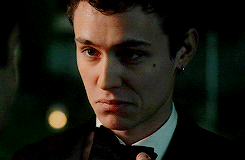
ʻ / let me introduce you to a prized member of our honors society , axel roy-dreyfus . this cismale cancer has been a student at our institution for seven years and is currently a 21 year old junior. through the halls , he has always reminded me of aron piper , but there is always more than meets the eye , like the fact that he regularly takes acid to inspire his artwork . coral cape has made their future just as bright as their smile , i assure you .ʼ ( muse 17 , riley , 20 , cst , she/her )
pheeeeew as if i couldn’t love aron piper more, s3 of elite rlly did me like that jesus fjdkslgjdsf anyway PLS like this or dm me or discord me idc, i would love to plot with all of u <3333
TWS: drugs, depression, death, car accidents, a really fcking long intro post aha !
if u wanna be extra in the mood when u read this …………… pls feel free to have this audio post playing in the bg while u peruse. i have been crying listening to this all week. thanks for coming 2 my ted talk here is axel now !
NAME — axel roy-dreyfus.
NICKNAMES — axel, ace, a.
PRONOUNS — he/him.
AGE & DOB — 21 & august 10, 1998.
PLACE OF BIRTH — new york city, new york.
NATIONALITY — french-american.
MAJOR — visual studies & psychology.
EDUCATION — cape coral international school.
CLUBS — honors society.
* BACKGROUND OVERVIEW !
axel was born the only child to two loving parents, an american father whose family has run a large media conglomerate for decades ( i got insp from hbo succession ok ), and a french mother whose family has a large hand in the development of nuclear energy in france ! so like ........ $$$$$$
there were probably a hundred timelines in which axel became a spoiled brat, but the universe was fortunate and brought two of the most kind-hearted souls that were ( relatively ) uncorrupted by the power and wealth that their families brought ( they were the youngest in their families, probs. youngest child syndrome *coughs* me ). he grew up in a loving household, one that was open and generous—their four empty bedrooms were always available for axel’s friends to stay over if they needed,
axel learned from their optimism, from their generosity—why be manipulative, when his family had the means to procure anything with ease ? it was a dangerous bubble to grow up in, but his parents, being forward thinkers too, saw him as an equal growing up. they’d tell him all the family drama as they rolled their eyes. needless to say, they didn’t have to work too hard to get by in life, to live in luxury.
TW DEATH. on the eve of his parents’ anniversary when axel was sixteen, a sophomore in high school, his parents died in a tragic car accident in paris on the way back to the airport. he was left devastated, alone in a home with no one to return to. END TW.
while he wasn’t around at cape coral, he was sent to live with his uncle ( his father’s brother ) and aunt, where he finally got immersed into the cutthroat life of the roy family, no longer skirting the edges of the family business. he would constantly get compared to his cousins all the time, which he hated. his aunt and uncle also expected him to follow in his family’s footsteps and continue working at the family company—which he also despised, but didn’t voice openly. he’d known about the shady deals, thought the monopolization of media was an evil he’d want to avoid.
finding it hard to express his pain and loneliness after his parents’ death, axel started taking up art and painting more seriously than just a hobby. he painted and painted and painted, staying after school in the art studios just to let his emotions out somehow. and he became talented—garnering interest from his teachers, his peers, the portland community, and eventually worldwide with his social media following.
TW DRUGS. but the art didn’t spark out of nowhere—he certainly needed help, both to inspire his works, but also to relieve the pain of loneliness, to help him transition from his old life to a new. it was weed at first, but he slowly started dabbling in acid, cocaine, and molly, amongst other things. END TW.
now at cape coral, he’s continuing pursuing his career as an artist, with a humble following, slew of awards under his belt, a few international articles published about his unique genre ( see @ canvas section on my pinterest board here ), and has been invited to have his work exhibitioned in a galleries across the nation.
* PERSONALITY !
axel certainly hasn’t lost the positive charm that he had grown up around, with parents like his. he’s pretty go-with-the-flow ( in a sense, far less uptight than his cousins, and probably many other cape coral students ), preferring to stay on the sidelines than get into the spotlight ( unless it’s the art scene ! ).
he’s generous, and sometimes doesn’t realize when he’s being taken advantage of—another trait he’s probably received from his parents, who were far too giving for their own good.
he’s kind, but not a pushover—he’s becoming more confident in who he is, and won’t back down from pushing back in conversations, nor let his friends make terrible decision for themselves. sometimes he’s a bit stubborn in that capacity.
he’s a pretty good listener, and with his share of heartbreaks and pains, he’s been known to give pretty good advice while he’s sitting at his easel, painting away. whether or not he chooses to follow that same advice himself—a little less certain.
he certainly still focuses on his studies—being part of the honors society—as he continues to pursue a double major in visual studies and psychology. perhaps the interest in drugs came first from his interest in the mind itself. so, he’s definitely an academic, but he likes to have fun, too.
ambitious, yes—in the artistic development sense. otherwise, spontaneous, for sure. he’s chasing highs and new experiences that will inspire his artwork in the future.
he’s fiercely loyal to those who he trusts, but wouldn’t necessarily go too far out of line to protect them. he’ll certainly go out of his way to pick someone up in one of the several cars he has ( he’d never had the heart to sell his parents’ cars ), to chat about problems, to work things out—but he probably doesn’t have the chops in him to break laws for people. but he’d never sell them out—he’d just stay silent.
sometimes he tends to zone out, sketching doodles on his notebooks and napkins, reveling in unique natural color combinations, being fascinated by shapes and lines. but he’ll also be the first to apologize for zoning out.
* CHARACTER TROPES !
TW: DEATH, DRUGS — growing up, axel roy-dreyfus was your classic BOY NEXT DOOR. shining smile, perfect manners, star on the cross-country team who had a charming smile and a brain, too. he was raised that way on purpose: picture perfect, for the only child of a roy and a dreyfus, two completely powerful families in the media world. but their expectations were not met because of strict curfews, or perfectly tied ties, no—axel wanted to be perfect to make them proud, because he loved them. because they were strong but caring, who saw axel as an equal. he never called them ‘mom’ or ‘dad’, but ‘william’ and ‘diana’ instead—they were his best friends, they never hid anything from him—not the family drama, not company secrets. they were the perfect little family, one that his friends often envied, but sometimes good things fall apart.
their little picturesque bubble burst quickly when his parents passed away in a car accident when axel was sixteen, and he was thrust into the bustling life of the roy family. though he was privy to the family drama through the lens of his parents before, he never realized how deeply cutthroat and horrible business could be. he would be constantly compared to his older cousins, would be on the receiving end of inquiries about where he would be attending college (cape coral, of course—their entire family’s alma mater). he found himself playing the role of the CONTENDER, often, battling unrealistic expectations to keep his family happy, yes, but more importantly, himself sane. but with axel’s loneliness, with his sadness came an awakening. unable to properly express himself with words anymore, he turned to art. and people realized that he had a gift like no other.
art became a refuge for him—he’d spend hours upon hours in the studios at school, and when he outgrew them (or rather, found other means of inspiration through pills and other substances), he moved his creative space to his dorm, his apartment—wherever he had space to just be. people started catching onto his talent: teachers and professors first, then peers, classmates, friends who supported his endeavors. purchases made their way across the world and his name became more and more familiar. his art is raw, vulnerable, not for the aesthetic but for the emotion elicited from symbols, colors, shapes. it’s his own genre, one that people have been more and more intrigued by these days. it’s gotten to his head, a little, surely—that he’s made a name for himself outside of the roys and the dreyfuses. he now has a bit of confidence behind him, being able to list his earnings and the recognition he has received at local galas—and people are starting to accept him for his future, too. it fuels him, makes him a HOTSHOT, but of course, not everyone knows about the measures he takes to ensure his creative juices keep flowing.
outside of his own personal journey, axel is known to be a loyal friend. the relationship he had with his parents certainly prepared him to be the shoulder to cry on, to give sage advice to people in need. he jokes that his apartment is now half an art studio, half a therapist’s office, by the nature that many people swing by to chat while he paints (sober, or not). he relied on his friends when his parents passed away, not exactly receiving the emotional support from his family that he needed. in that way, he’ll never sell someone out, never tell someone’s secret without their permission. in the perspective of those he cares about, he could be labeled a FERRYMAN, one who helps guide those who are in need of advice or just someone to talk something through with.
* PLAYLIST !
erase — omar apollo:
i don’t mind, my head’s in the sky thinkin’ of you, oh, feelin’ for you, oh oh it’s cold right now, i miss you for life it’s not going away, i thought i’d be okay, yeah
TW: DEATH, CAR ACCIDENTS — this song might more relate to axel’s relationship with his parents more than an ex-lover, though it could pertain to the latter, too. his parents, who died in a car accident on their way back from a trip to paris four years ago, where axel’s mother is from, were his inspiration, his support, his best friends. axel had an incredible bond with his parents—especially, given he is an only child. his parents nurtured a gentle but passionate soul in a family that was full of cutthroat, cold businesspeople. their death sparked his interest in expressing himself through art, as he couldn’t find the words to fully describe his pain and emotion. he misses them dearly, still sometimes finding it hard to navigate life without them, and dedicates his life and art to them everyday.
easy love — lauv:
keep comin’ back, guess you could say i’m attached last time we called it a wrap, i came beggin’ and all that you’re like a habit, it’s bad i got a habit, it’s bad oh no, i’m not even mad
TW: DRUGS — this song describes his personality and love life—unfortunately, he can be a bit reckless when it comes to his own well-being. he certainly dabbles in more than a few drugs, acid and marijuana mostly, to enhance his creative abilities, as it was a piece that he had painted during an acid trip that garnered him the fame and respect he has now. he tries to rationalize it as a creative process, as something necessary to push his artistry to the next level. similarly, in his love life, i imagine that he gets himself into rather toxic relationships. although he, himself, is a selfless person, especially to those he is loyal to, he sometimes doesn’t exactly realize when things are unhealthy to him—bad habits, you could say. he’ll keep crawling back to people as long as they make him feel good, even just for a night.
vincent — don mclean:
now I understand what you tried to say to me and how you suffered for your sanity and how you tried to set them free they would not listen, they did not know how perhaps they’ll listen now
TW: DEATH — this song describes axel’s life as an artist, in the eyes of someone who appreciates his craft. his extended family, including his uncle and aunt whom he now stays with during holidays and family gatherings, don’t quite appreciate nor understand his interest in art. he has struggled, since the day his parents passed away, to get them to understand how much art means to him, and how it’s not just a phase. now at cape coral, where he is being nurtured to reach his fullest potential, he wants the chance to join a residency program after college in paris to reconnect with his mother’s family’s roots—he’s already garnering attention from a worldwide audience. he still faces a lot of backlash from his family, and it affects him more than he would like it to.
* AESTHETICS !
thrift shopping, talking on the rooftops until three am, poems scribbled on masking tape, dried flowers, french music on a record player in the background, paint-stained hands, hoodies on a sunny day, waves crashing on the sand, unfinished sketches on napkins, vintage film cameras, whiskey breath, exposed brick, clean unmade sheets, spontaneously bought train tickets, rose petals, writing letters to his parents, subway chatter, graffiti-ing positive messages on highway tunnels, cigarette smoke, art galleries circled on city maps, coffee under a paris awning.
* HEADCANONS !
he has an instagram page, showcasing his artwork, that has 82.7k followers at the moment. he doesn’t post his face or anything about him personally, just cryptic descriptions of vulnerable art.
he keeps his two last names out of respect and love for his parents—not, like many people believe, to be able to milk the advantages to being born to two families that control great media conglomerates in the world.
one of his most damning vices is cigarettes. he smokes them to feel calm, and often needs someone to swat them away from him.
his apartment is full to the brim of canvases and paintings—it’s honestly a zoo. layers of works line the walls of the hallways, whatever’s newest being the furthest out. there are some hidden gems laying around, if anyone were interested in checking.
he has ear piercings—much to his extended family’s dismay. he never used to wear it around when his aunt and uncle were present, but ever since his newfound confidence has bubbled up in his chest, he doesn’t care anymore.
he’s bisexual.
there’s an enormous chalkboard in his apartment too, and visitors are encouraged to draw and write messages on it—as long as they don’t erase his grocery list. he finds inspiration for his work on there a lot.
he’s a 3x state chess champion—it’s a skill he was taught as a kid, and likes how he had practice reading people from the game.
there’s an apartment in his name in the 7th arrondissement of paris, where he escapes to from time to time, the musée d’orsay is his favorite place on earth.
axel absolutely adores train rides. the ride from new york city (where his aunt and uncle live, and where his parents used to live) up to cape coral is some undisturbed peace where he likes to just sit and think, enjoying the changing colors of the autumn leaves.
* WANTED PLOTS !
these are just like stubs and rando ideas i had ……… pls feel free to pick and choose and mix and match idk i’m also ok at brainstorming ig PLEASE MESSAGE ME I WANT ALL THE PLOTS AND ALL THE ANGST OK THANKS !! i also have a WANTED TAG here
TW DRUGS
a best friend ( preferably since childhood ! ): give me guzman n ander vibes, where the two have known each other since they were little, have been through thick and thin, is axel’s biggest supporter in his art. ( insp: x ) OKF DSJO BUT PLS GIVE ME THIS ……………… 3x07 guys, come on. we all know.
childhood friends / best friends / ride or dies: likely other cape coral students who have been around a long time, they’ve seen axel through his ups n downs, were there for him when his parents passed, and get up to shenanigans at galas and charity events. the elite kids basically. they’re the siblings he’s never had, he’d protect them with his life and offer advice and paint things for them !
someone who goes with him to art museums pls he’d be super excited and cute and tell them everything about high renaissance art and theories of design patterns
good influence, someone who will swat cigarettes out of his hands and keeps him working on his assignments when all he’d rather do is paint. they keep him in line, and although axel might whine a little at first, he really values their friendship and them always looking after him. i’m thinking rebe/ander vibes from this season.
on the other hand, a bad influence, who might introduce him to different drugs, trip on acid with him as he paints, maybe causes him to spend his enormous trust fund on random shit.
tour guide, axel is good-natured and caring, and that doesn’t stop with the current cape coral students. even if some of his peers and his family might scorn him for being more open to them, he wouldn’t hesitate to show some of the new students around and show them the ropes. besides, he knows what it feels like to want to make a name for yourself.
former roommates (probably a cape coral student), who may or may not have been close.
current roommates (probably also a cape coral student), who may or may not mind the fact that he’s been filling their apartment with enormous canvases, probably super super close friend to his, probably someone whose family probably is close to his, too.
neighbors, there’s a lot of possibility here !! maybe they hated the way axel seemed to blare his speakers when he’s painting and tripping, they could be friends who storm each others’ rooms when they’re having bad days. his couch is practically a therapists’ couch at this point.
a critic, who pushes him to be a better artist. to dig deeper, to think further, to challenge himself and his abilities — which might be his downfall, considering he’s already diving into drug use.
his uh ……… first male hookup ??? this probably would have happened maybe like a year ago after him n giuliana broke up !!! he came out as bisexual in high school but had a long-term gf for a while so it would have been his first time rlly experimenting ya feel
on that note other hookups that he might have slept with during this ??? trying time
* MORE !
i’ve got a pinterest board here fjdklsf if u got this far and wanted to check it out ! pls pls plot w me i want all the plots *grabby hands* feel free to msg me on discord or here on ims !!!
13 notes
·
View notes
Note
16, 35, 42, 43, 45, 49, 53, 62, 63, 69, 79!
THAT is a lot of numbers omg,, let’s do this
16. answered here!
35. How in-tune with their native element are your dragons? Does it vary? If you have any dragons that aren’t, why is that?
OH yes does it vary. I have some dragons who are very elementally inclined (no mistaking Tamarind for anything but a Nature Boy), some who outright refuse their birth element (Zaffre is native to plague, but uses lightning magic), and many who are just neutral. I’d say the majority of my dragons don’t have any sort of magic or strong affinities. But the ones that do have magic often have powers that don’t have much to do with their element at all. As for why, I guess that’s just the way it is haha. Zaffre just never jived with Plague. And same with Bergamot, who hides his plague eyes with green goggles... And Kyurem has light eyes, but they’re as icy a dragon as it gets! Moraine doesn’t have magic at all, but she still relates more closely to her family’s ice roots than wind. and Gushers is wind too, but she is ALL about the arcane, it’s what interests her the most. i could list more but i think that suffices haha...
42. If your clan leader went off the deep end, who would stand by them no matter what?
Oh well, my clan has four leaders: Tarragon, Moraine, Zaffre, and Tamarind... them going off the deep end, not totally sure what it would entail omg. They’d probably all try and stand by each other though, though if they were doing like, truly horrifying stuff the others would do their best to try to figure out and ultimately stop the situation dfadsfsdg otherwise they’d do their best to be understanding of why one of them was suddenly so distraught or whatever? i think i good portion of the lair would want to like, help too. (though it also would depend on a lot of factors.
I guess if you want some more specifics, Ingot would be the most likely to stick by Moraine? Ingot really respects and trusts Moraine and they are very good friends! Kyurem of course would stick by Zaffre, they’re partners and have known each other for like 40 years by this point and have gotten closer than ever the latter half of that. Tamarind has had a bit of harder time getting support from dragons other than Tarragon and Moraine, and his heaps of exes in the lair doesn’t help, but I think I’ll say Hallow would be most likely to stick by him. They’re exes too, but it ended amicably and I think of anyone in the lair, Tamarind probably helped Hallow come to terms with the loss his charge the best, so Hallow has the utmost respect for Tam. And lastly, Tarragon... Tarragon is so lovable, friendly, and gentle that finding dragons in the lair that like him is as easy as it gets...but truthfully he isn’t super close to a ton of them outside his fellow leaders. I think the one who’d be most likely to stick by him is his younger brother Paragon, who throughout their whole lives the two have always done what they could to support each other, even if they find themselves at odds sometimes. Paragon isn’t the most popular dragon in Florabrisa, but Tarragon is always there to defend him anyway, and Paragon would definitely return the favor should something strange ever happen.
oof that was long im gonna put everything else under a read more fadsfd
43. How has your clan changed since it started? This can mean when you first joined or in-lore.
Well, in lore, the clan’s certainly grown a lot in the 20 years it’s been around! It’s still a small community but it’s bustling! The gardens of Florabrisa will always be its major feature, but it has a lot more on offer now.It’s always been pretty agrarian, but there are much more food options now than there used to be. Crystalspirit has grown his art gallery considerably through the years and now with Ardest joining the clan, there could be a local art scene coming... I also wanna get some theatre in, Florabrisa definitely has one and i think Tabbagh is gonna be a big player, they love the stage. Ricotta too honestly, she’s very theatrical. and Bomoseen will probably be trying to introduce film to the lair (though they currently don’t have the tech for it. Bom needs to talk to Xana.....)
And out of lore, I think I still have more or less the same concept as i did at the start! The biggest change might be that at first Tarragon was the only leader, but I later decided to elevate Moraine, Zaffre, and Tamarind to be his equals. Tarragon leading by himself just didn’t really make sense to me haha. Also adding the swamp was a pretty big deal! Picked up some many swamp aes dragons this year haha... Also, initially I did think that breeding didn’t have to be a relationship thing, but admittedly I’d done absolutely nothing with the concept so that’s probably not the case anymore dfafd I’ve definitely aged the lair too, like a lot of dragons I initially saw as kids have grown up now :`) i do wonder how much further along i’ll take the timeline, since I do have some dragons in my lair who lorewise intend to leave Florabrisa within a few years. I could probably stick them in my den, or just let them stick around anyway...?
45. How competent would your clan say your leaders are? How competent are they really?
Tarragon, Moraine, Zaffre, and Tamarind have been leading for almost 20 years now, so I’d say the clan thinks they’re in good hands haha. All four leaders have their different personalities and roles and balance each other out in many ways, and they all take the clan’s needs very seriously and the dragons of the clan feel respected by them! They do what they can for the clan and get the job done as best the can, so yeah the clan would say they’re very competent! And I’d say so too, they are good bunch together :D
49. Who’s the “clan mom”?
Ooh, there are a few dragons who could fit the bill, Moraine being an obvious one. Ricotta probably fits the bill even better than her though! Ricotta will really go out of her way to make sure dragons are getting properly fed..or at least eating plenty of pasta haha. She is incredibly caring for the wellbeing of the lair and does what she can to make her fellow Florabrisians happy and blessed by her presence haha. Ricotta admittedly does tend to pick favorites though dasfsda And there’s Clash too, who is very nurturing and along with her wife Antikyra has taken care of younger dragons of the clan for awhile now! Many of them definitely think of the two as parental figures. The list of dragons under 20 years old who have called Clash ‘mom’ is probably quite long.
53. What dragons make up your most disgustingly cute relationship? What makes them so cute?
OH man lots of strong contenders here. I think Prim and Proper are the best answer! They have matching aesthetics, are pretty much inseparable and utterly glow in each others’ company, they share everything, and of course THEIR NAMES omg... No one in the clan knows if like, they just coincidentally have matching names or if they did it on purpose. (honestly I think it’s a mix of both. they happened to have similar names then just..made them match better haha this isn’t 100% set in stone but i’ve considered their ’full names’ are Primrose and Prosperity. Either way Prim is definitely short for Primrose, it’s Proper’s name i’m not as sure about.)
62. Who’s the clan troublemaker and who has to clean up the mess?
The clan troublemaker is Prank Master Patlican! You never know what to expect with her. She’s most famous for hiding vegetables in strange places, but she will do almost anything. From good old fashioned handshake buzzers to leaping out at poor unassuming dragons to switching locations of Tarragon’s potted plants, she has a large prank repertoire... Her friend Ottomy does his best to clean up her mess. He’s very often the target himself fsadfaf
63. Are there any rivals in your clan? Are they friendly rivals or bitter enemies?
Oh yes, I got some rivals! There’s definitely some stuff going on with Xana/Iolite versus Matrix/Micron. I think they’re more friendly than anything, but then again they probably subscribe to ‘keep your enemies closer’ haha... Matrix also has some sort of rivalry with Lisianthus, who is mostly just confused by it tbh. They’re probably ultimately friends though.
Millisievert and Falcata were pretty fierce rivals and hate everything the other one stands for. They’ve mellowed out a bit over the years and mostly just try to avoid each other now.
Tamarind and Kyurem also probably count to some extent? Mostly Tamarind is bitter that Kyurem managed to take both his wife AND son (and not even a son from said wife dfdsaf) They do try to be adults about it and are generally cordial to each other, though Tamarind is definitely like ‘that guy’ under his breath.
OH and how could i forget. Marglobe and Warglobe! Marglobe just wants to grow tomatoes and Warglobe won’t stand for it for some reason.
69. Who misses their old flight/home the most?
Ooh hmm..most dragons are quite happy to be staying in Florabrisa and came in part because they wanted to get away from their home for whatever reason.
There is Tamarind! I imagine he misses his Nature home every now and then, but he is chargebound to stay in Wind. That said, his charge being the native flora of the Windswept Plateau is like, obviously it can take care of itself so he doesn’t really need to stay there, he can definitely leave for a period of time if he so desired, but it’d still feel wrong to him to do so. Plus all his friends are here!
Osira probably gets a little homesick too. She is very strongly an arcane dragon and I’m not really sure why she left? Maybe she just wanted to go exploring, or just needed to take some personal time. It’s likely she and her gf Gushers will decide to move to the Starfall Isles at some point, but for now they’re happy together in Florabrisa c:
79. How religious is the bulk of your clan?
Not very religious at all! Florabrisa doesn’t exalt or really follow the teachings of any deity, aside from the general influence of Wind culture. That’s right. Florabrisa commits tax evasion fdsfgd
There are some members who follow a particular deity or two, like Qirrasi is very devout to the Plaguebringer, and Inermis is by far the biggest Windsinger follower around, but yeah in general deities are talked about very little in Florabrisa, and rituals are few and far between.
That said... I also gotta mention Ricotta. She claims to be a goddess. Most of the clan doesn’t really think she’s one, but there is a small handful of dragons who do, and she is happy to accept their prayers and offerings and give them blessings for it! (though she’s happy to share her divine food with almost anyone in the clan anyway, as long as they aren’t rude to her!) Some of her known followers include Macaroon, Artichoke, Calabasas, Nutshell, Sicliane, and Marbles! (and even some that don’t really believe in her are happy to play along anyway haha) There’s also the newer goddess in town Lemuria, but considering her complete inability to back up her claim, I don’t think she has even one follower so...RIP her.
thank you for the ask omg!! this was a Lot, but it was a lot of fun too :D
6 notes
·
View notes
Text
Hit List: Top Things to do in Door County, Wisconsin
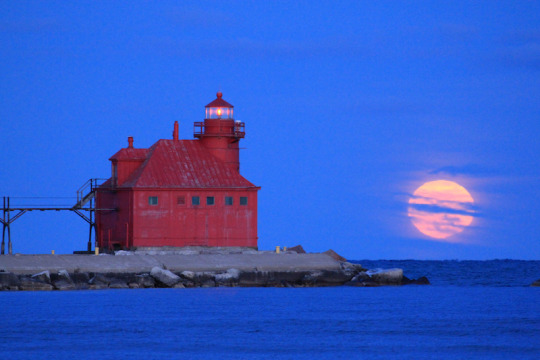
There are few places in the Midwest more delightful than Door County, in the upper peninsula of Wisconsin. With 300 miles of shoreline, you can watch a sunrise and a sunset over the water without leaving the county.
You can also stroll through acres of orchards, explore art galleries, devour cherry pie, sip on local wines and brews, splash in the lake or paddle along the bluffs, stroll through five state parks, visit 19 unique communities and tour 11 historic lighthouses. Here are my Top Picks of Things to Do in Door County!
Take a Boat Ride
You're at the lake — so you gotta get on the lake! Board a cruise along Lake Michigan or Green Bay, and you may even be able to see some of the shipwrecks from the boat (supposedly there are some 400 shipwrecks in these waters!). You can also take the Washington Island Ferry to Washington Island from the mainland, crossing "Death's Door" as you do so. The French bestowed that name on the treacherous waters that sent so many ships to the bottom. Other great ways to get on the water are to go sailing, rent kayaks or try your hand at stand-up paddleboarding. Then congratulate yourself on being part of the mere 1% of visitors to Door County who ever get off the mainland! The Door County Maritime Museum in Sturgeon Bay is the perfect place to learn about the history of the area lighthouses, shipbuilding, shipwrecks and more.
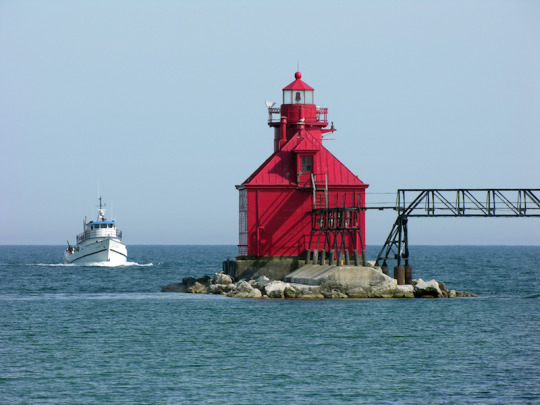
Canal Station N Pierhead Lighthouse & Boat. Photo Credit: DoorCounty.com/Door County Visitor Bureau
Take a Lighthouse Tour
There are 11 lighthouses in Door County, many of which were built in the 1800s, and a semi-annual festival celebrates their history (including tours to some that are rarely open to the public), held in the early summer and fall. The Chambers Island Lighthouse has the most interesting history, in my opinion, while the Cana Island Lighthouse is the most unique. You have to be ferried across the ankle deep water by tractor just to get to the lighthouse! Another worth visiting is the "Bird Cage" - the old Baileys Harbor Lighthouse, with 150-year-old range lights and a new boardwalk that's been built between them.
Enjoy Tastings at Local Wineries and Craft Breweries
There are 8 vineyards and wineries in Door County, and there's even a Wine Trail with maps, festivals and other events. My favorite is Door 44, where husband-and-wife team Steve Johnson and Maria Milano left their legal careers behind to realize their dream of winemaking. If you might be surprised, as I was, to think about wine growing that far north, Steve told me that the climate here between June and October is almost exactly what you find in Bordeaux, France. Harbor Ridge Winery is another enjoyable stop, also run by a husband and wife team.
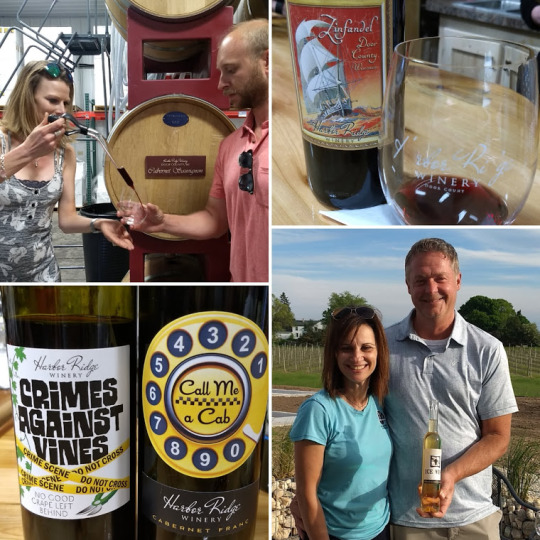
Winery touring and tasting in Door County, WI Steve Johnson (on the bottom right of the pic above), co-owner of Door 44 with his wife Maria, says that the key to successful winemaking is just to let the grape be the grape. "If you let the grape just do what it wants to do, you'll have a good wine." There are also many local brews and craft master brewers around here, so it's easy to find tours and tastings, as well as great choices for local beers on the menus. And for something different - not wine and not beer - check out Island Orchard Cider. Here they make a variety of ciders from their own 40 acre orchard on Washington Island. My favorite was the pear....mmm, delicious!
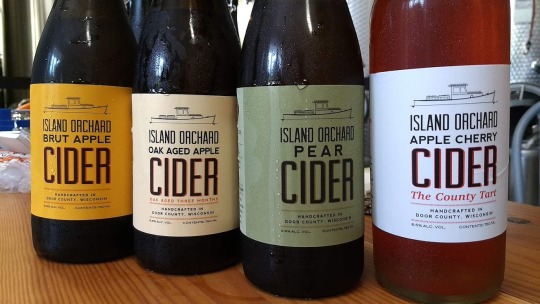
Island Orchard Cider
Visit Artisan Cheesemakers
What goes with wine better than cheese? And the state is well-known for its dairy farms and cheeses, so you won't want to miss visiting some of the world's best cheesemakers. Wisconsin is home to every single licensed cheese master - 6- of them to be exact. At Wisconsin Cheese Masters, you can find an exclusive selection where many cheeses are not available anywhere else. Owner Jim Pionkoski has a personal favorite: Marieke Golden, made by Marieke Penterman, whom Jim calls the best cheese maker in the U.S. and maybe even the world. Originally from the Netherlands, Marieke mainly produces gouda cheeses. The Golden is her only non-gouda, and Jim eats it every single day. "It's the only cheese I never get tired of," he says.
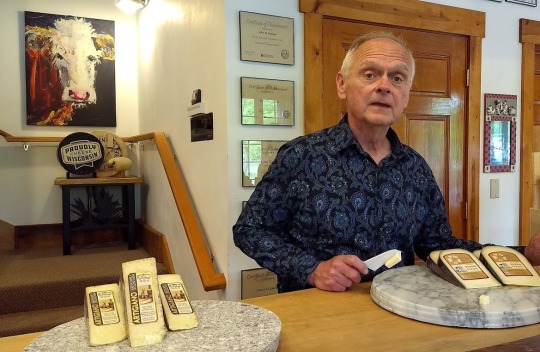
Jim Pionkoski of Wisconsin Cheese Masters, sharing his love of cheese. Another don't-miss cheese stop is the Door Artisan Cheese Company, run by Wisconsin Master Cheesemaker Mike Brennenstuhl, who has been making cheese all his life. This "one stop shop" includes a beautiful market, extensive underground cheese caves where the magic happens, and an amazing restaurant, Glacier Ledge. You can take tours to learn how the cheeses are made and see the caves. Mike uses only local dairy farmers, and only buys milk for the process from farms that are certified AHA, meaning they are hormone free and humane.
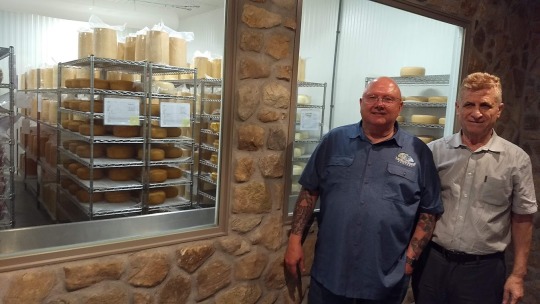
Wisconsin Master Cheesemaker Mike Brennenstuhl and colleague showing us the cheese caves at Door Artisan. Check out Mike at work and telling the story of Door Artisan Cheese Company:
Stuff Yourself at Incredible Restaurants, from Casual Dining to Chef-Driven Foodie Spots
As mentioned above, the Glacier Ledge restaurant is highly recommended; I had one of my best meals of the trip there. They serve an internationally-inspired tapas style menu that's perfect for tasting and sharing.

A dish at Glacier Ledge restaurant at Door Artisan Cheese
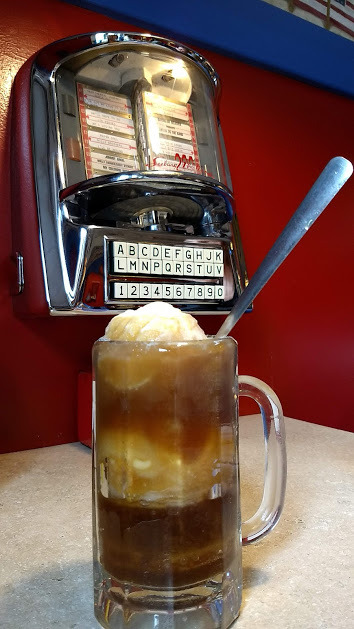
For an opposite end of the spectrum at a long-time Door County institution, seriously DO NOT miss Wilson's Restaurant & Ice Cream! This adorable diner and ice cream parlor has been around since 1906, and it's located in what I personally found the most picturesque and explorable town in Door County - Ephraim. A mini jukebox adorns every table, and the burgers are honestly to die for. But be sure to save room for one of their old-fashioned ice cream treats like shakes, floats and sundaes. And if you're a root beer fan like me, you will love their housemade root beer. Best root beer I've ever had in my life!
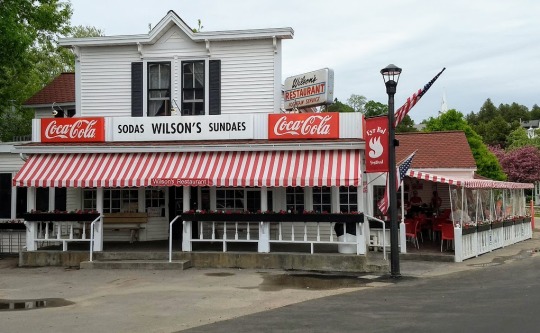
Wilson's Restaurant and Ice Cream Parlor in Ephraim, Wisconsin For breakfast or a coffee fix, my pick is Skipstone Coffee Roasters in Sister Bay, my second favorite Door County town. Their breakfast sandwiches are hearty, delicious and healthy; and they make all of their flavor syrups in house. It's pet-friendly, and if you're in a hurry for your next adventure they have a quick self-serve bar with a pay station.And no restaurant round-up of the Wisconsin peninsula would be complete without talking about Al's. Maybe you've heard of it or seen pics on Instagram, but Al Johnson's Swedish Restaurant is the place with the goats on the roof. Every morning, the goats are led up a ramp to the sod roof of the restaurant, where they graze all day. You can even adore them from the two webcam streams that are affixed up there. Al's has been an icon for nearly 60 years, and it really is an authentic Swedish restaurant. Now, I have to admit I didn't eat there, but from everything I've heard the food is good. I just went for the goats - oh, and I also picked up a few things in the very nice little boutique there. Check it out!

Al Johnson's Swedish Restaurant Goats
Experience a Traditional Wisconsin Fish Boil
OK, so technically this could go under the above "Eating out" section. But make no mistake - a fish boil is as Wisconsin as it gets, so much so that the experience definitely deserves its own category! There are numerous places that put on a fish boil, but I recommend Pelletier's. They serve a traditional fish boil every night of the week starting at 5 pm, along with a full menu of other items as well as lunch and breakfast service.
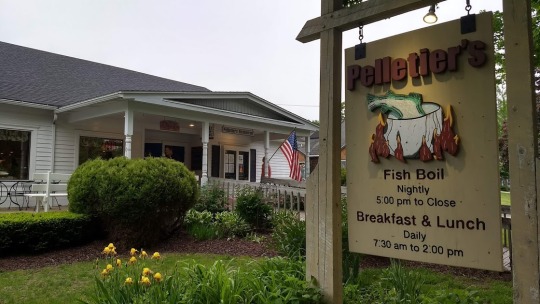
Pelletier's traditional Wisconsin fish boil Owner & Boil Master Matthew Peterson has been doing this for decades, learned from his father before him. The boil consists of freshly caught whitefish from Lake Michigan, cooked outside over the open fire along with corn and potatoes. The tradition comes from the Scandinavian settlers a century ago, and is very much alive and well in Door County. The drama of the "boil over" is pretty cool (advice: don't stand too close to the pot!).
Go Gallery Hopping
Door County is home to an impressive number of galleries and artist studios. It's a great place to discover everything from a small, emerging artists to high-end galleries and accomplished artists who have made a name for themselves. Some of the places I would recommend making a stop would be: Blue Dolphin House, set on four-and-a-half acres of beautiful perennial gardens, in a building that dates back to 1860. Run by Peg & John Lowry, they've been in business for more than 50 years.
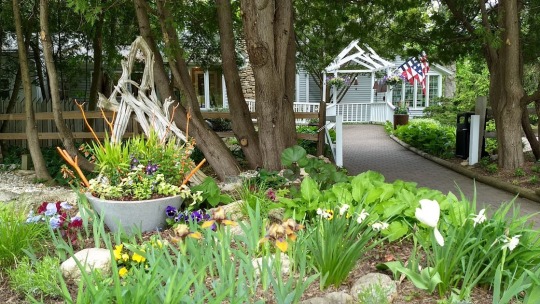
Blue Dolphin House shop & studio Deanna Clayton Studios - you'll need to make an appointment or check her website for opening hours. Deanna is an incredibly successful glass artist, using a centuries-old technique called pate de verre. With it, she creates some astonishing sculptures, which have been purchased and commissioned by patrons including many Ritz Carlton hotels around the world.
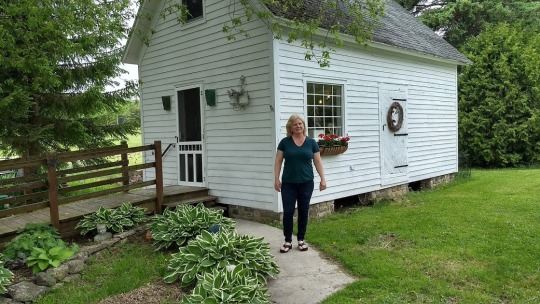
Artist Deanna Clayton in front of her studio Fine Line Designs Gallery & Sculpture Garden features original paintings, custom wood furnishings, glass, jewelry, ceramics and fiber art more than 90 renowned artists. Stroll the two-acre sculpture garden that showcases sculptures in bronze, stone, metal, ceramic, copper, and stainless steel. Unique, collectible artworks and original gifts are found indoors and out.

Fine Line Designs Gallery If you want more information on the art scene, check out the Door County Visitors guide!
Pick Your Own Cherries
Door County is the cherry capital of the U.S., and you can experience cherry picking yourself at one of the County's pick-your-own cherry orchards. Many families make it a fun tradition every cherry season. Check out the listings of places you can do this, along with many other resources, at Wisconsin Cherry Growers.

Cherry picking in Door County, Wisconsin Have you been to Door County? What are your favorite experiences there? Share in the comments below! Read the full article
#arts#beer#boats#cheese#cider#culture#doorcounty#explore#fishboil#history#lakes#lighthouses#restaurants#travel#USA#wine#Wisconsin
0 notes
Text
Art Basel Miami, Where Big Money Meets Bigger Money
MIAMI BEACH — As the global art world descends on South Florida for next week’s Art Basel fair, which is celebrating its 17th anniversary, it’s worth remembering how truly small the art world once was.
As late as the 1980s, you could fit contemporary art’s A-list players all in one room. And the room in question often belonged to the prominent collectors Don and Mera Rubell — inside their Manhattan townhouse, then the de facto after-party venue for the Whitney Museum of American Art’s career-launching biennials. “We knew every collector in the world then,” Don Rubell recalled with a chuckle. “Ninety percent of them were in New York or Germany.”
Richard Prince was a fresh arrival to the Rubells’ after-party in 1985, having made his biennial debut that year with his signature photo appropriations. He would later write of his nervous excitement at threading his way into their gathering, past the reigning enfant terrible Robert Mapplethorpe, and spying his own artwork there. “It was the first time I’d ever seen anything of mine hung on someone else’s wall,” an awed Mr. Prince remembered. “I was still an outsider but that evening I felt, if only for a moment, part of another family.”
That family of artists, museum directors, curators and collectors is now exponentially larger, with far more money, and far more rungs of status up for grabs. But the Rubells are just as keen on occupying its center stage as they were in 1993, when they purchased a 40,000-square-foot warehouse for their growing art collection in the Wynwood neighborhood of Miami. They later became instrumental in wooing the Swiss-based Art Basel fair to begin a Miami edition.
Now they have enlarged the showcase for their 7,200 artworks. Opening Dec. 4, the Rubell Family Collection, rechristened the Rubell Museum, fills a 100,000-square-foot campus just west, in the new art neighborhood of Allapattah — a gritty mix of warehouses, hospitals and modest homes. The Annabelle Selldorf-designed complex includes a restaurant, bookstore, event space, outdoor garden, and not least, contemporary art holdings that overshadow that of any other South Florida institution.
Allapattah’s cheaper real estate beckoned: The Rubells bought their new museum’s lot for $4 million, and purchased a similarly sized lot across the street for $8.6 million. Several heavy-hitting developers have also moved into Allapattah, mirroring a pattern of gentrification that saw property values skyrocket in Wynwood (and forced artists to move out). While Mrs. Rubell insisted this move wasn’t simply about flipping properties, she admitted “the appreciated value of the Wynwood space is why we can now do all this.” Valued by Miami-Dade County at $12 million, its planned sale is likely to fetch upward of twice that.
The family still runs the same nonprofit organization to exhibit their collection, which remains open to the public five days a week. So why now call it a museum? Is it about bragging rights? “It’s about what we want to step up to,” Mrs. Rubell said. “I meet people who say to me ‘I always wanted to come, but I didn’t know how to get an invitation.’ Here we are today, open to the public, doing all these exhibitions, and people still feel it’s not accessible. But everybody knows what a museum is.”
The Rubell Museum’s debut exhibition is “a hit parade of the last 50 years of contemporary art: Keith Haring, Jeff Koons, Jean-Michel Basquiat, Andy Warhol, Richard Prince, Cindy Sherman, all the favorites,” Mera Rubell explained. “If you’ve been scratching your head for the last 50 years saying ‘What the hell is all this crap?’, well that stuff is now worth $100 million. But never mind the money. We’re talking about the art that defined a generation.” So rather than dismissively rolling your eyes, she continued, “you can say ‘Wow, this is teaching me something about the world we live in’!”
That teachable lesson, for better or for worse, will be on full display throughout Miami next week. Below is a guide to the highlights.
So how do I attend the Art Basel Miami Beach fair?
Staged annually inside Miami Beach’s Convention Center, entrance is as easy as buying a ticket on site. (Although at $65 a ticket, it’s pricey window-shopping.)
What exactly is the difference between Art Basel Miami Beach and Miami Art Week?
The Art Basel Miami Beach fair features 269 exhibiting galleries. Nearly two dozen satellite fairs have also sprouted around Miami. Add in pop-up shows, celebrity-studded product rollouts, as well as Miami’s own galleries and museums all putting on their best faces, and you have the circus that local boosters have taken to calling “Miami Art Week.”
Two dozen satellite fairs, seriously?
Some, like Prizm and Pinta, focus on art made by the African diaspora and Latin Americans, respectively. NADA, or New Art Dealers Alliance, remains the fair on many itineraries for its emphasis on scrappy but influential galleries hovering just beyond Basel’s gatekeepers (and hoping to eventually breach the gate). The works here often offer an early look at tomorrow’s art stars. Another strong contender for Art Basel Jr. is the Untitled fair, whose galleries’ offerings tend to be a bit more thoughtfully gestated than much of NADA’s throw-it-all-against-the-wall-and-see-what-sticks aesthetic.
What about Miami’s own artists?
A perennial sore point for local residents is the dearth of homegrown talent found within the Basel fair — only 3 of its 269 exhibiting galleries are based in Miami. Still, those three are exhibiting some stellar natives: David Castillo will feature the winningly playful assemblages of Pepe Mar; Central Fine is showing paintings by Tomm El-Saieh, whose hypnotic brushwork fuses Haitian folkloric traditions with classic Abstract Expressionism; while Fredric Snitzer’s booth is devoted to paintings by Hernan Bas, whose beguiling, homoerotically charged portraits of dandies and waifs remain some of the strongest work to emerge from Miami over the past two decades.
Where can I see more local galleries?
Head to the Little Haiti neighborhood, the new ground zero for Miami’s most consistently impressive galleries — many of which were priced out of Wynwood as it morphed into an entertainment enclave. Start with Emerson Dorsch and their Color Field-steeped paintings by Mette Tommerup — but call ahead for performance times when Tommerup and her crew will be wrapping themselves inside her huge canvases and rollicking around the room. The Iris PhotoCollective ArtSpace is nearby, dedicated to socially engaged photography and run by Carl Juste, a Miami Herald photojournalist whose work never fails to dazzle. Nina Johnson is featuring new drawings by Terry Allen, and while his Lubbock, Texas, origins are anything but tropical, a rare opportunity to see his handiwork (and hopefully hear him perform some of his delectably barbed country songs) is too good to miss.
What other neighborhoods should I visit for art?
Southwest of Little Haiti, in Allapattah, is Spinello Projects’ group show featuring Clara Varas, who begins her process with an abstract painting (often done on a bedsheet) and then adds all manner of found detritus from the city streets, amounting to sculptural Frankensteins that are fascinatingly more than the sum of their parts. Then head up to the Design District’s Paradise Plaza for the latest jab at the art scene by the Brooklyn artist Eric Doeringer, who first grabbed attention in Miami by creating “bootleg” Art Basel V.I.P. cards (which let more than a few plebeians cross the velvet ropes). He’s since graduated to “bootleg” paintings, and his latest show features handcrafted Christopher Wool knockoffs priced at $1,000 each, several zeros cheaper than the real ones. It’s a stunt that works on both a conceptual level, wryly commenting on a blue-chip artist whose paintings already seem factory-made, and on a pleasurable one, offering Wool fans on a budget a chance to take home a tactile tribute: They may be fake Wools, but they’re genuine Doeringers.
How about Miami’s museums?
Another year, another mogul making a splash with a new privately owned museum. This time it’s Allapattah’s El Espacio 23, exhibiting the contemporary collection of the real estate developer Jorge Pérez, whose name already graces the side of the partially taxpayer-funded Pérez Art Museum Miami. After concerns that Mr. Pérez would turn his attention to his new project — leaving taxpayers to make up the difference — he has publicly assured his namesake museum that it will not see any lessening of his financial support. Over on South Beach, two small institutions have consistently been punching above their weight: The Jewish Museum of Florida-FIU, which is featuring provocative photographs by Zachary Balber that blend Yiddishkeit with thug life, and The Wolfsonian-FIU, paying an 80th birthday tribute to its Willy Wonka-esque founder, Mitchell Wolfson Jr., who has spent a lifetime traveling the world hunting down remarkable historical curios.
Enough museum-hopping, I need a break.
There’s a reason it’s called Miami Beach. Just a few blocks east of the Basel hubbub, the gently rolling surf of the Atlantic Ocean beckons. Bring a towel, stake out a quiet spot on the white sand, and explore the fine art of doing nothing. Admission is absolutely free.
Rubell Museum
1100 NW 23 Street, Miami, (305) 573-6090, [email protected]
Sahred From Source link Travel
from WordPress http://bit.ly/34zuA9G via IFTTT
0 notes
Text
Cape Town Art Fair
1 The specific booths of the galleries were displaying their respected artists’ works – hence the similar work and aesthetics portrayed by the galleries. The differences were the variety of work, as there is only enough space in a booth for so many artists.
2 Hate: Yohannes Tesfaye, Courage #2 (2018) – Addis Fine Art, United Kingdom. I disliked this piece, due to the fact that it looked out of place in the space. The entire booth’s curation was awful because they positioned their desk in the centre of the booth, which caused most of the artworks to be obstructed. The piece itself looked to be merely a decorative object and an unappealing one due to the fact that the colours were random and the subject matter subjective – thus without any direction (not even the title).
Gerard Malanga, Kati came over to visit (1989) - Caroline Smulders, France. Malaga is an American photographer and film maker whose work is quite inspirational from an Avant-garde, Contemporary perspective as it was ground-breaking in the coming of Pop art and Postmodernism; However, this artwork is simply objectifying the female body in a light that is so superficial and destructive to the image of women in modern society. I understand that the image was taken 30 years ago and there is an obvious redirection in which subject matter of nude people (women especially) are handled. This is an example of how it shouldn’t be done.
Kimathi Mafafo, EMBOLDEN IV (2019) – Ebony Curated, South Africa. Unappealing, abstract piece that was hung skew and the colour palette is horrendous. I just wasn’t feeling it tbh.
Love: Andrea Collesano, Sigiza (2017) - Barbara Paci Galleria d'Arte, Italy. This artist drew the sea creatures which were curated in a clustered fashion in small wooden frames. I personally knew of his art before the show due to the fact that his illustrations have always been interesting to me. He tried to reflect the monsters within his mind and the attention to detail is spectacular. The overall display added to the artworks and seeing their artworks in person reminded me about the pleasures in drawing.
Dalila Dalléas Bouzar, Untitled #11 (2015) – Galerie Cécile Fakhoury, Ivory Coast. This artwork is one of 14 paintings of princesses which Dalila has done. I love the portraits as they don’t objectify the female body and empower the figures by their facial gestures and key items such as crowns and jewellery. I love her plain style of imagery and the manner in which they were displayed at the fair. Only three of the paintings within the series were displayed in the booth and I chose #11 due to the fact that it was the most appealing one to me personally.
Steve Bandoma, Mental Slavery (2012) - MAGNIN-A, France. I’ve been following Steve Bandoma’s work since matric, due to his exploration across Africa and his journey as an artist that studied in Congo and is now in Cape Town since 2006. His works are very deep and represent his darkest anguish as an abused child. I loved this painting and was quite thrilled to see his work in person. His work displays the discombobulation that I feel on Monday mornings before class.
3 From what I can roughly remember, it would be between painting and mixed media, but I’m leaning more towards painting, due to the fact that more of the artworks at the fair were hung and I assume a large majority were paintings, photographs and mixed media artworks.
4 Each booth had different amounts of walls and surface area/wall space. I suspect that was the galleries’ choice due to the fact that they all had different displays and what not. Differences were colours of the walls, desks, position of artworks – sculptures being placed as centre pieces, desks being placed as centre pieces, hanging artworks, plinths, etc. - all made a difference to the flow of the booth and the total appeal of the works. I found that the curation was sometimes made or break for some of the booths.
5 Some booths use different texts next to the artworks. Some display price tags, little artist bios and sometimes artist statements too. Some booths completely avoided placing any information next to the artworks. The most crucial details that I found were needed were the title’s, artist’s names and the year of completion.
7.) The lighting was awful due to the fact that there were primary and secondary lights. The primary lights were the ceiling lights that were shedding light upon the entire fair. They were powerful in their own right. The secondary lighting is what I suspect to be the main problem with the lighting every year. The secondary lights were lights placed upon the walls of the booths. They shined over the specific booths; however none of the booths seemed to adjust the lights on any of the specific artworks. I found that some of the lights caused glares on framed and non-framed artworks, which actually spoiled them in my opinion.
8.) People within the booths are dressed rather "clean" due to the fact that they need to be presentable to the viewers, visitors and audiences. I couldn't help but notice that most of the people attending the art fair were dressed in extra colourful apparel. I think this had something to do with the natural assumption that if you want to look at art, you should become one with it?
9.) The main things which are trying to be sold here are artworks. Books, posters, clothing and prints are amongst other things also trying to be sold to visitors of the fair. The fair is mostly aimed at the art world and it's sub categories. I found that foreigners will be more eager to come and spend money on artworks than locals, due to the globalisation of "African" Art. I also saw overpriced food for sale, must've been organic.
10.) Idk
11.) Idk
12.) The assistants at the booths didn't take me seriously on many occasions but I think that was due to the fact that I came across immediately with the price. I think by asking about the artwork and actually conversing with them would give us both an understanding and then by asking they would think it would be because of curiosity sake. I did get one price out of the three that I had asked but I think I should've taken it further.
13.) The fair relates to the brand's agenda. I found that most of the fair's sponsors this year had some relation to money or investing. I understand that the sponsors also play a role into the functionality of the fair but I suspect that the fair also chose who they would work with. They fair needs to hold a certain type of prestige and by having big, well known and trusted sponsors, it secures a sense of quality within the visitors.
14.) The CTICC is a very large, central venue. It's a venue that has a lot of advertising relations in many other places of the city - such as the airport and other popular tourist destinations - and is a massive space that cans accommodate events of all shapes and sizes.
15.) Idk
16.) Idk
17.) The solo booths are more concentrated on an artist/medium than other booths which represent galleries and their wide array of artists.
18.) Idk
19.) Found objects and photography. I found that these two mediums reflect the popularity of themselves within the fair and outside of it. Using found objects and photography as a medium are currently mainstream media in the Contemporary Art world and it can be seen here. In terms of subject matter, historical and political aspects are the main theme seen in the work that was displayed.
20.) Stevenson, I love their art and feel that they represent their artists well and they have an open minded agenda and a variety of great artists who have worked with them.
21.) Smac Gallery, their gallery is small and I love their space. They may seem a bit more Conservative than others; however I enjoy the space whenever I'm in it.
22.) Idk
23.) Yes, I would display at the fair, due to the fact that there will be more things benefiting my gallery than anything else. The exposure, is the main aspect of this due to the fact that it creates a chain reaction for the art. The art expands through networking, purchasing and simply seeing by the viewers. I can't find a reason why anyone wouldn't be willing to take an opportunity like that.
0 notes